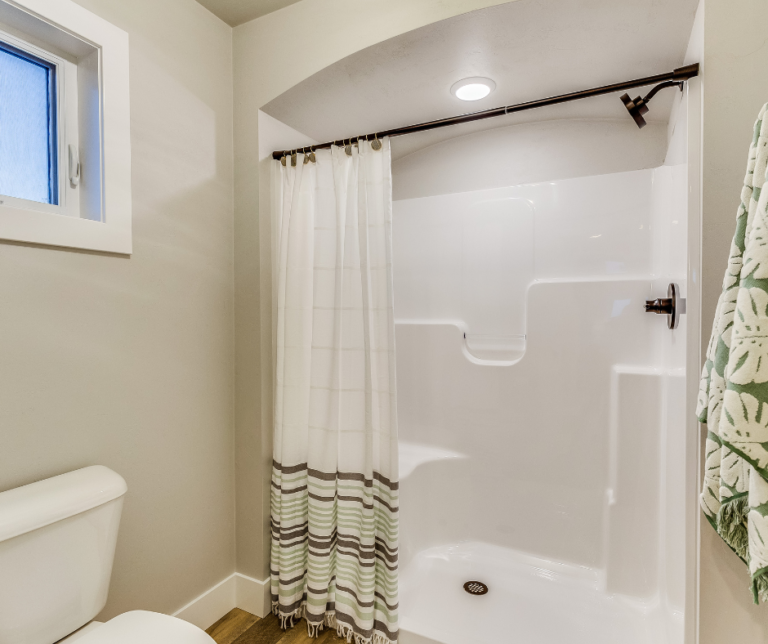Bathing and Dementia: How to Make it Easier

Helping a loved one with dementia bathe can be one of the most difficult tasks for many caregivers. What seems like a simple routine can turn into a stressful situation for both the person with dementia and their caregiver. This can lead to increased anxiety and even physical or verbal aggression. Bathing and dementia can be a challenging combination, but with the right approach, it’s possible to create a more pleasant experience. Let’s discuss why it can be a challenge, and what you can do to make it better for both of you.
Why Bathing Becomes Challenging
- Confusion – a person with dementia may not recognize the need for a bath or understand the process of bathing and this confusion can lead to feeling overwhelmed.
- Fear – feeling unsecure getting in or out of the bathtub or shower or worrying about standing on a slippery surface can be unsettling, especially if they have fallen in the bathroom before.
- Modesty and embarrassment – getting undressed in front of a familiar or unfamiliar person such as a private caregiver can cause distress and hesitancy.
- Loss of independence – being told “it’s time to take a shower” or being told how often you “need to” shower can feel like a loss of control.
- Sensory changes – temperature changes related to the water or the temperature of the bathroom, the sound of water splashing or running, or even the sensation of the water touching the skin can be uncomfortable.
- Medical considerations – chronic conditions such as arthritis pain, joint pain, muscle stiffness or muscle weakness can cause discomfort during the process.
- Visual-perceptual changes – variations in the color of the shower floor and bathroom floor can be difficult to distinguish, and a glass shower enclosure can appear invisible or unsecure.
Tips to Make Bathing Easier
- Clear communication
-
- Make the task feel like a positive event rather than a chore. Try saying, “let’s get fresh for the new day”, or “today is spa day, this will be fun!”
- Use simple language and keep the instruction short and to the point.
- Provide reassurance and praise. Saying, “I already warmed up the bathroom”, and “you’re doing great” during the bath or shower can go a long way.
-
- Be mindful of their preferences
-
- Ask if they prefer a sponge bath or a shower today and allow them to select their preferred toiletries.
- Allow choices, try saying, “would you like to shower before or after breakfast?”
- Make the process private by keeping parts of the body covered with a warm towel when possible. Being sensitive to their modesty is important.
-
- Maintain a routine
-
- Complete this task during the time of the day when they feel most relaxed and happy.
- Bathing around the same time each day creates familiarity, reduces confusion, and sets expectations.
- Practice consistency during bathing by setting up the room the same way ahead of time, undressing in the same sequence, and washing the same part of the body first and last.
-
- Create an inviting environment
-
- Warm up the bathroom ahead of time especially if your loved one states they are cold often.
- Make sure the room is well-lit. A dimly lit room or shadows can be confusing or scary.
- Try playing soft music or using essential oils to create a calm space and make it feel like a spa.
-
- Consider safety
-
- Use grab bars to assist with getting in and out of the shower.
- Use a shower chair if the person is fearful of falling, has mobility issues or has pain related to a chronic condition.
- Use a non-slip mat when stepping out of the shower.
-
- Be flexible
-
- Allow your loved one to control the direction of the water with a handheld showerhead.
- Encourage independence and allow them to complete as much of the task as possible.
- Do not rush the process – this can lead to resistance, anxiety and fear.
-
- Try again
-
- If they refuse, wait a few minutes and try again.
- Be creative in the verbal phrases that you use to encourage compliance – keep trying until you find what works best.
-
Success Story for Bathing and Dementia
During a visit to a new client’s home, the spouse of the person with dementia, was quite frustrated that his wife would not shower. He said that she was always someone who cared about her appearance – and exclaimed, “I even put in a brand-new master bath for her, and she won’t use it!”.
After looking at the master bath, which was beautiful, I noticed the shower was completely enclosed by glass. I wondered if this glass created a sense of fear or if she felt exposed, so I suggested that he hang up a temporary solid colored shower curtain in front of the glass.
I was thrilled to receive an update from him the next week, that his wife showered with the shower curtain in place. This is a great example of how having an objective view from a dementia care consultant can have a huge impact on bathing and dementia.
Final Thoughts
Bathing challenges are common in dementia care, but understanding the reasons behind the resistance can help you approach it with patience, empathy and creativity. Flexibility, routine, reassurance, and respect for their comfort can turn a stressful situation into a more manageable experience. If you are having difficulty with any aspect of dementia care for your loved, including bathing and dementia, please reach out to me. I always offer a complimentary introductory call, and I look forward to hearing from you.
Follow Dementia Nurse Andrea
for tips, tools, and expert insights to support your dementia care journey - free every day!
